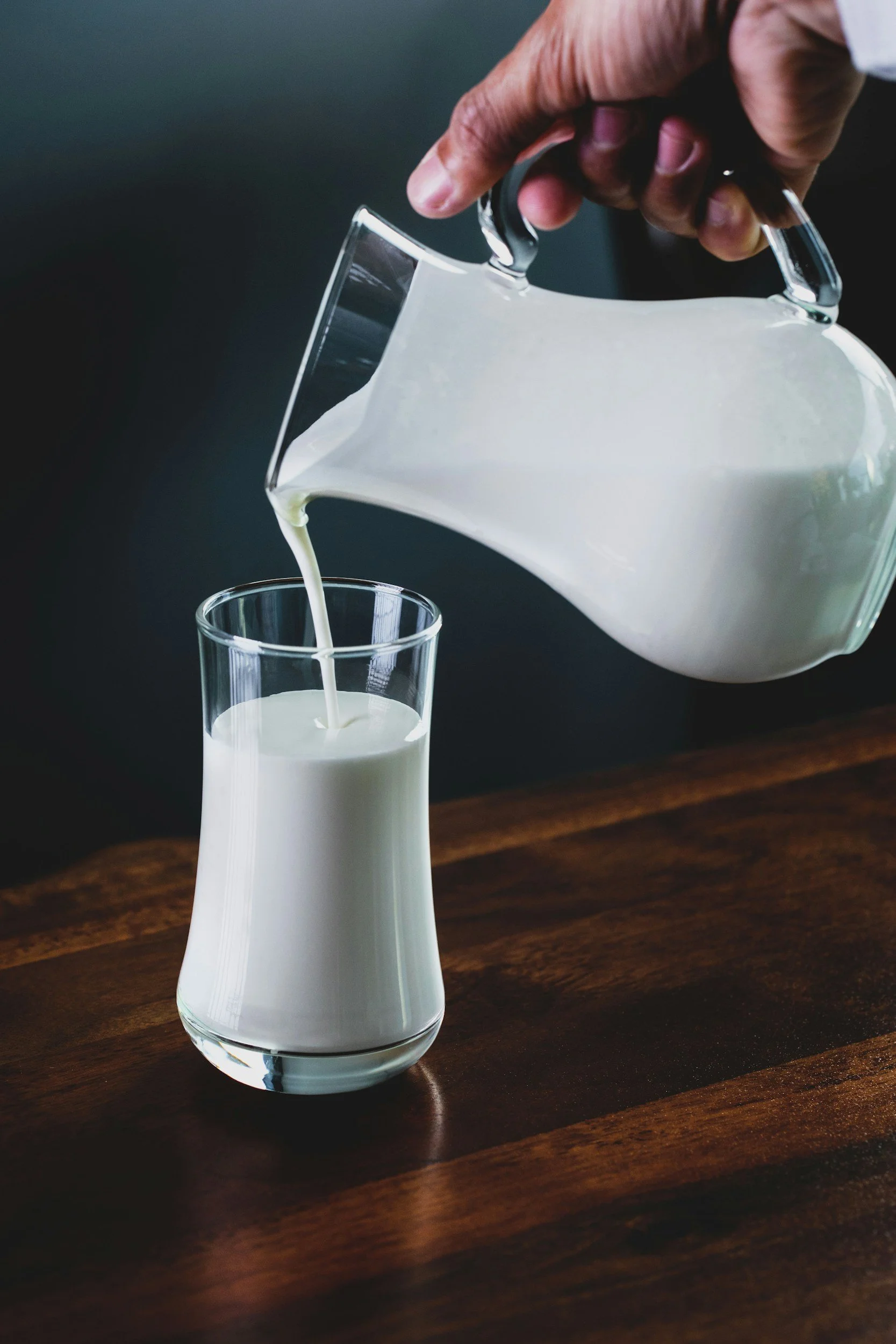Beyond Calcium: The Role of Dairy in Women’s Bone and Muscle Health (Copy)
Beyond Calcium: The Role of Dairy in Women’s Bone and Muscle Health
June marks National Dairy Month, a time to recognize the nutritional value of dairy products in our diets. For women, incorporating dairy can be particularly beneficial in maintaining bone density and muscle mass, thereby reducing the risk of osteoporosis and sarcopenia as we age.
Understanding Dairy Servings
Dairy encompasses more than just milk. It includes a variety of products, each offering unique nutritional benefits:
Milk (1 cup or 8 oz): Provides a rich source of calcium, vitamin D, and protein.
Yogurt (1 cup): Offers probiotics for gut health along with calcium and protein.
Cheese (1.5 oz of hard cheese): Delivers concentrated nutrients, including calcium and phosphorus.
Cow’s milk provides nutrients beyond calcium.
Nutrients Beyond Calcium
While calcium is essential for bone health, dairy products also supply:
Protein: Crucial for muscle repair and maintenance.
Phosphorus: Works with calcium to build strong bones and teeth.
Vitamin D: Enhances calcium absorption and bone growth.
Potassium: Helps maintain healthy blood pressure.
Vitamin B12: Vital for nerve function and red blood cell formation.
Riboflavin (Vitamin B2): Supports energy production and cellular function.
These nutrients collectively contribute to a robust musculoskeletal system, which is particularly important for women, who are at higher risk for bone-related conditions.
Addressing Lactose Intolerance
Even for those with lactose intolerance, yogurt, with the live active cultures, can help digest lactose.
Lactose intolerance occurs when the body lacks the enzyme lactase, needed to digest lactose, the sugar found in milk. Symptoms can include bloating, gas, and diarrhea. However, many individuals with lactose intolerance can still consume certain dairy products:
Hard Cheeses: Such as cheddar and Swiss, which have lower lactose content.
Yogurt: Contains live cultures that help digest lactose.
Lactose-Free Milk: Treated to remove lactose, making it easier to digest.
It’s advisable to introduce dairy slowly and in small amounts to assess tolerance levels.
Evaluating Milk Alternatives
For those who choose to avoid dairy, plant-based milk alternatives are available. However, not all are nutritionally equivalent to cow’s milk:
Soy Milk: Closest in protein content to cow’s milk and often fortified with calcium and vitamin D.
Almond, Coconut, and Oat Milk: Most of these plant-milk alternatives are typically lower in protein and may contain added sugars and thickeners. They are often fortified but may lack the full spectrum of nutrients found in dairy.
When selecting milk alternatives, it’s essential to read labels carefully to ensure they provide adequate nutrients and are not high in added sugars or other additives.
Conclusion
Incorporating dairy into your diet can play a significant role in maintaining bone and muscle health, especially for women. Understanding the full range of nutrients that dairy provides, along with options for those with lactose intolerance, allows for informed dietary choices that support long-term well-being.

